
Manufacturer's Specifications:
System Type: Four-way with sealed box woofers.
Drivers: Two 10-in. (25.4-cm) woofers, 6 1/2-in. (16.5-cm) mid-bass, 2-in. (5.1-cm) dome midrange, and 1-in. (2.5-cm) dome tweeter.
Crossover Frequencies: 180 Hz, 1.5 kHz, and 3.5 kHz.
Frequency Response: 24 Hz to 20 kHz, ±3 dB.
Sensitivity: 92 dB SPL at 1 meter for 1 watt.
Nominal Impedance: 4 ohms.
Power Handling: Nominal, 150 watts; maximum, 300 watts.
Dimensions: 57 in. H x 13 in. W x 13 1/2 in. D (145 cm x 33 cm x 34.3 cm).
Weight: 110 lbs. (50 kg).
Price: $3,000 per pair.
Company Address: P.O. Box 277, Milford, Pa. 18337.
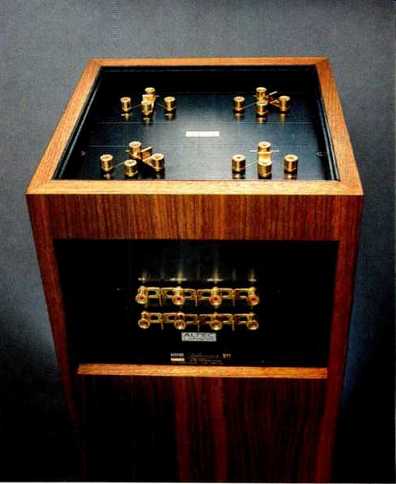
The towering 511 is Altec's top passive speaker system, surpassed in their line only by the active Models 512 (a powered version of the 511 tested here) and Bias 550. The five-way amplified Bias 550, priced at $12,000 per pair, is Altec's technological flagship. The 511 brings the same driver technology to a passive system set up for multi-wiring from as many as four separate amplifiers.
Altec's driver technology features woven carbon-fiber cones and diamond-coated polyamide domes. The carbon fiber is in the form of a coarsely woven cloth sealed with an epoxy resin. It is quite unlike the rigid carbon-fiber composites used for tennis racquets and race-car suspensions. Its function is to damp the cone and make it airtight rather than to stiffen it. The sparkly diamond coating on the domes looks like an extremely fine metallic paint. It is said to make the dome more rigid.
The two 10-inch woofers used in the 511 are well made but fairly ordinary-looking, stamped steel-frame units with 1 1/2-inch voice-coils. Plastic trim rings are used to dress up their appearance when they are mounted to the front panel.
The woofers' foam surrounds and deep spiders allow large mechanical excursions. Pressure under the dust caps, generated by large excursions, could produce noise and distortion, so Altec uses porous dust caps to vent this pressure.
This type of venting results in a leak through the voice-coil gap and spider to the inside of the cabinet. Such a leak reduces low-bass output, but this can be compensated for in the design. Many manufacturers prefer to use a sealed dust cap and vent the pressure by other means, such as through the center pole.
Each woofer has its own compartment of about 1.9 cubic feet. The well-braced compartments are separated by an angled divider and are about half filled with fiberglass insulation. The cone mid-bass also gets its own sealed box, of 186 cubic inches. The midrange and tweeter are each sealed-back units mounted in the upper woofer chamber.
Internal wiring is 16-gauge with crimped connections to push-on terminals. I prefer soldered connections for reliability, but connections in the Altec 511 speakers all seemed tight and secure.
The elaborate crossover is also sealed from the rest of the enclosure. This is a good idea because the crossover has 24 binding posts which could otherwise allow leaks. These gold-plated brass terminals and straps allow up to four separate cables to amplifiers and are used to set room compensation circuitry in the crossover. Switches and level controls would make adjustment simpler, but these often deteriorate and become noisy or intermittent. The 13 electrolytic and mylar capacitors, seven iron-core inductors, and 13 resistors which make up the crossover are mounted on four circuit boards.
The terminals for room compensation are located in a recess on the top of the cabinet and are normally covered by a smoked-glass panel. There are four terminal groups ("Bass Roll-Off," "Upper Bass Level," "Mid Level," and "High Level"); each group has four terminals. Settings are changed by connecting the supplied straps between each group's common terminal and one of the other three. These other terminals are labeled "1," "2," and "3" for "Bass Roll Off," and "-1 dB," "0 dB," and "+ 1 dB" for the other three terminal groups.
The eight input terminals for amplifier connections are on a recessed panel on the top rear of the cabinet. The multi way terminals are not spaced to handle double banana plugs. While the rear of the system, including the input panel, is attractively finished, terminals and wires will be quite visible if the system is placed out from the wall behind it. The high terminal position also requires that speaker cables extend an extra 4 feet up from the floor. If you use the full-blown, quad-wired approach for a pair of 511s, this will cost you an extra 32 feet of cable. With exotic speaker cable, this could cost as much as the speakers.
Multi-wiring, which is not recommended with great enthusiasm in the 511's manual, is a method of wiring each crossover section or group of sections with separate cables back to the amplifier or back to multiple amplifiers. The 511 is a four-way system, hence the possibility of "quad wiring." Some say the crossover becomes more effective when each section is coupled directly to the low output impedance of the amplifier. How much better is this than using one heavy gauge cable to each speaker system? I doubt if the difference is audible.
Multi-wiring is not the same as multi-amping. Multi-amping is an entirely different configuration that uses an electronic crossover to divide the frequency spectrum before it is sent to separate power amplifiers for each frequency range. This reduces clipping and provides direct coupling to the drivers. There is no direct connection to the drivers available in the 511 to allow multi-amping.
The short owner's manual does not go into all of the options deeply, but it does have adequate pictorials showing how to strap the crossover for different configurations. It also gives short and accurate advice on system placement near walls and toeing in for best soundstage. In practice, these large speakers will usually be placed where there is room, not necessarily where they sound best.
In appearance, the 511 is a simple, elegant tower: A pair would look great with an alabaster bust of Beethoven on one and perhaps ZZ Top on the other. The speakers are large, however, and can overpower smaller surrounding furniture.
The finish is oiled walnut veneer with a textured black trim plate and a black grille on the front. I prefer the clean look, with the grille on, to the "tech" look of plastic trim, woven cone sheen and diamond domes with the grille removed.
Measurements
The magnitude of input impedance for two crossover strap settings of the Altec 511 is plotted in Fig. 1. The flat, or "normal," curve, shows no woofer resonance peak. This is a result of Altec design engineer Tommy Freadman's choice to parallel the woofers with a Zobel electrical network to exactly cancel this peak. Using a Zobel is an expensive option, but it allows the woofers' 180-Hz, low-pass crossover filter to operate more precisely.
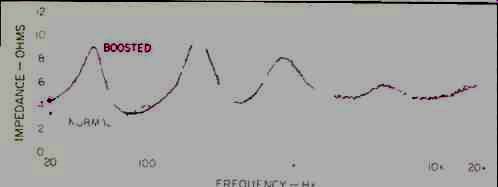
Fig. 1--Impedance vs. frequency. The "Normal" curve is with "Bass
Roll Off" set at "1" and all other straps at "0 dB";
the "Boosted" curve is with "Bass Roll-Off" at "2" and
all other straps at "+1 dB," the setting which produces the most
difficult load.
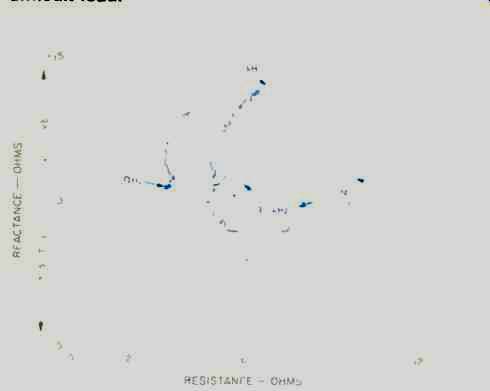
Fig. 2--Complex impedance for same settings as " Normal" curve
of Fig. 1, showing reactance and resistance vs. frequency.
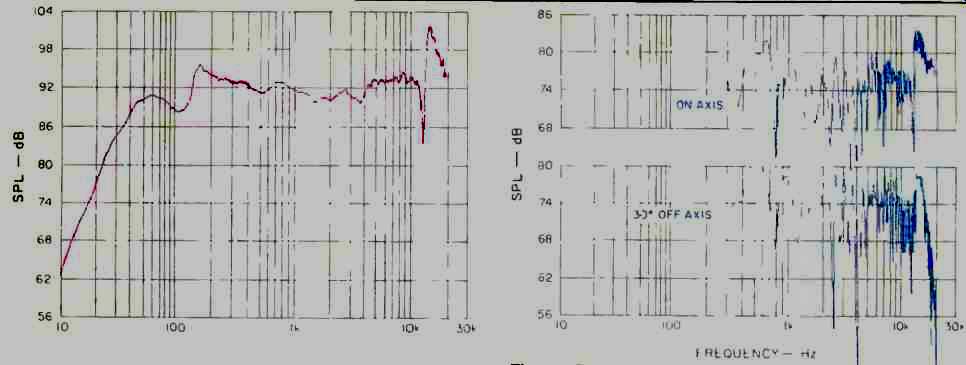
(left) Fig. 3--One-meter, on axis anechoic frequency response, for an input
of 1 watt into 4 ohms (2.0 V). (right) Fig. 5--Three-meter room response, on
axis and 30° off horizontal axis.
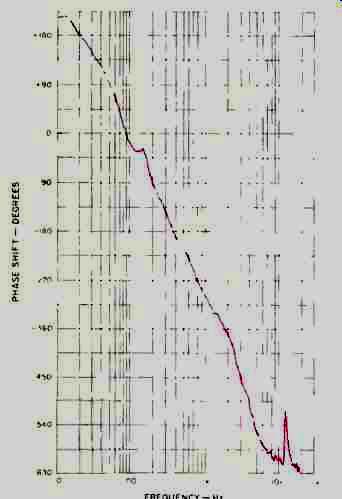
Fig. 4--One-meter, on axis anechoic phase response.
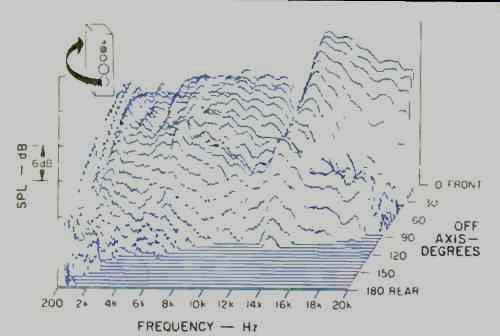
Fig. 6--Horizontal off-axis frequency responses, taken from the front, around
the side, and to the rear of the speaker.
Note that, here and in Fig. 7, the frequency scale is linear and that responses are not normalized to the on-axis response.
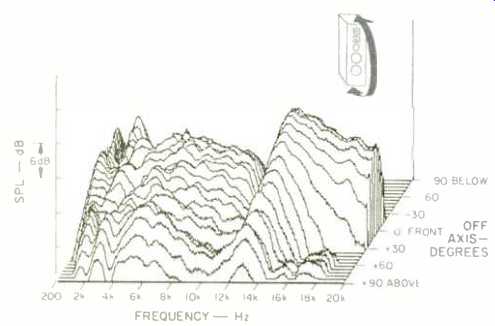
Fig. 7--Vertical off-axis frequency responses, taken from below, up the
front, and to the top of the speaker.
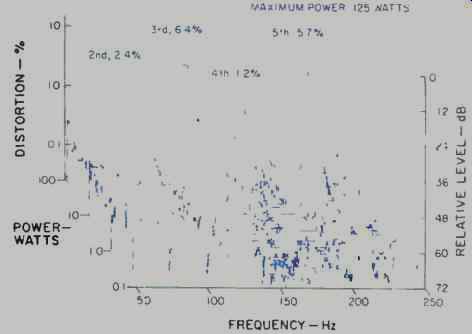
Fig. 8--Harmonic distortion products for the musical tone E1 (41.2 Hz).
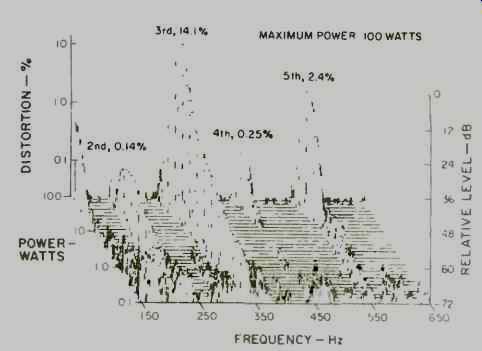
Fig. 9--Harmonic distortion products for the musical tone A2 (110 Hz).
Position "2" of the "Bass Roll-Off" terminal group removes the Zobel network, resulting in the 40-Hz peak in the "Boosted" curve on the impedance plot. This option boosts the acoustical output in the region from 50 to 100 Hz. A third option leaves the boost and cuts the upper range of the woofers. For the "Boosted" curve in Fig. 1, the other three straps were set for "+ 1 dB" to obtain the lowest impedance curve. The 511 is a current-hungry, 4-ohm loudspeaker but has modest impedance swings. This indicates that it is an easy load for an amplifier rated to drive 4 ohms, with any setting of the straps. The complex impedance plot, Fig. 2, confirms the low phase angle of the impedance for the "normal" curve of Fig. 1.
One-meter anechoic frequency response of the 511, plotted in Fig. 3, shows exceptional smoothness from 200 Hz to 10 kHz but anomalies above and below this range. The 6'/2 inch mid-bass driver exhibits an extremely sharp high-pass acoustic response, with a slight peak at 150 Hz. I suspect that the resulting phase shift prevents the smoothest blending to the woofers. Woofer output is flat to 40 Hz and usable down to 20 Hz. A tweeter resonance mars the high-end response with a major dip and peak. Altec Lansing is aware of the resonance and says it is modifying subsequent production runs to eliminate it.
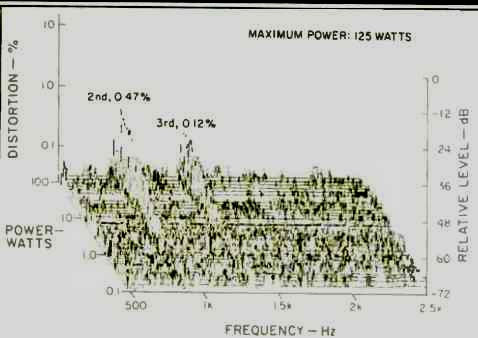
Fig. 10--Harmonic distortion products for the musical tone A4 (440 Hz).
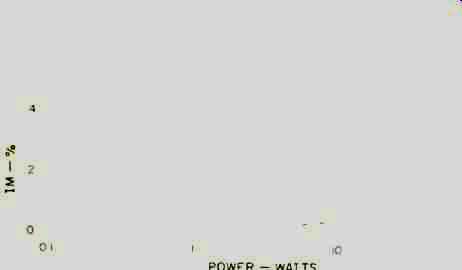
Fig. 11--IM distortion on 440 Hz (A4) produced by 41.2 Hz (E1) when mixed
in one-to-one proportion.

Fig. 12--Power linearity, shown as input power handling vs. frequency for
1-dB compression of the output.
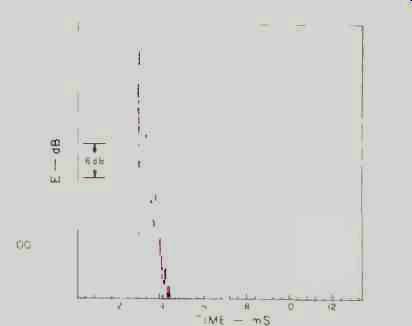
Fig. 13--One-meter, on axis energy/time response for a test signal swept
from 200 Hz to 30.2 kHz.
Most of the energy is centered around 10 kHz.
The acoustic phase shift of the anechoic frequency response is plotted in Fig. 4. Most of this phase shift is a result of using conventional, well-designed crossover networks and is not usually considered a problem. The tweeter resonance shows up clearly on this plot.
When speakers are placed in rooms, the nearby reflecting surfaces produce slightly delayed sounds that combine with the direct (anechoic) sound. Figure 5 shows how this affects the frequency response on axis and 30° off axis at a 3-meter listening distance. Much of the "spiky" behavior is averaged by the listener's ears, so what we really hear is the sound of speakers in a room, and there is nothing wrong with that.
Look at these curves for the wider trends, such as the dip around 300 Hz. Although it's quite mild in the 511, it could cause some midrange instruments to sound thinner. The 12 kHz tweeter resonance is apparent in both curves.
Horizontal and vertical off-axis response plots are shown in "3-D" presentations in Figs. 6 and 7, respectively. The linear frequency scale expands the upper range, which is often the most troublesome. The horizontal curves show desirably controlled constant directivity to about 10 kHz, where the tweeter radiation becomes irregular and narrows.
Vertically, it is the same story, except for the expected interference between drivers in the crossover ranges as the relative distance between them is changed.
Figures 8, 9, and 10 show the level of harmonic distortion for power inputs from 0.1 to 100 or 125 watts, for frequencies of 41.2 Hz (E1). 110 Hz (A2), and 440 Hz (A4), respectively. Distortion of 440 Hz is insignificant, and the 6.4% of third harmonic on the 41.2 Hz at 125 watts is quite acceptable. However, the 14.1% reading at 110 Hz for a 100-watt input is unexpectedly high.
The 110-Hz tone was below the 180-Hz crossover between the woofers and the mid-bass, but it could cause either driver section a problem. The separate inputs for each section made it easy to determine that the problem was in the woofers. It is most unusual for a sealed-box woofer's distortion to increase at higher frequencies, so I observed the woofer terminal voltage on an oscilloscope.
Sure enough, waveform distortion appeared as drive voltage was increased. The appearance of distortion coincided with the onset of audible distortion. The problem was traced to saturation of the iron-core inductors in the crossover. In other words, the woofer drivers were fine; the distortion was in the crossover. Manually sweeping low frequencies at a 50-watt input level revealed that the saturation affected the upper part of the woofer range the most. At 20 Hz, where the effect was small, the system sounded really clean.
High amounts of intermodulation distortion are common in loudspeakers. When a driver's cone or dome has to move significantly to reproduce a low frequency, both amplitude and frequency modulation of a simultaneously reproduced higher tone are likely. Not so with the Altec 511, at least for Audio's standard test frequencies of 41.2 Hz (E1) and 440 Hz (A4). The 511's crossover at 180 Hz sends these frequencies to separate drivers, so there is practically no interaction. Figure 11 shows the results.
Power linearity is plotted for the 511 in Fig. 12; the curve shows the power input which first causes 1 dB of compression. Power in excess of this usually results in distortion or damage. The 511 handles the 256-watt maximum that I use in this test over most of the audio range. The inductor saturation noted earlier does not reduce output: It just adds distortion, so the effect of this added distortion does not show up as power compression.
Dispersion of acoustic energy over time is plotted in Fig. 13. The 511 shows a single arrival, indicating minimal diffraction or reflection.
Use and Listening Tests
I placed the 511s about 10 feet apart along a narrow wall of my 18 x 25-foot listening room and about 5 feet out from the wall behind them. I experimented with toe-in, as Altec suggests, and ended up with a 20° inward angle for the most even soundstage. I not only listened on the center line, equidistant from the two speakers for this judgment, but also moved my chair within a small listening area. The 511s did a good job of maintaining a soundstage off the center line as well as on it.
The power amp used was a Bryston 4B, which is rated at 400 watts per channel into the 4-ohm loads presented by the Altec 511s. High-quality reference speakers with which I am very familiar were placed just to the inside of the 511s.
The spectral balance of the 511s was warm and solid, just a little heavier than the reference system's. Midrange and highs sounded exceptionally smooth, actually making a slight roughness in the reference apparent. To check bass smoothness, I used one of Ivan Berger's favorite tests: The tune "You Look Good to Me" by the Oscar Peterson Trio on We Get Requests (Verve 810047-2). The very evenly played scales of the acoustic bass revealed a slight accentuation of notes in a particular range. This might have been due to room interaction or to the unevenness that was measured.
Bass extended cleanly to the lowest tones found in normal music.
I found no problem with the 511's high end in the listening tests, but after I measured the tweeter resonance and peak at 14 kHz, I took another listen. I still could not detect a problem except on the already excessive sibilants of Jennifer Warnes' "First We take Manhattan" on Famous Blue Raincoat (Cypress YD 0100/DX 3182). Despite its appearance on the response plots, the peak is a minor sonic issue and Altec says it has taken care of this.
The 511s were not as spacious or as distant-sounding as my reference system. Many listeners will prefer the Altec's punchy, up-front sound, but I opt for more air and transparency. Although the soundstage extended evenly between the 511s, image localization was not as specific as the reference system's.
High sound pressure level was expected from the 511s, and they delivered it. Based on the 511's sensitivity and the amplifier's available power, the pair should be capable of 121 dB SPL. Popular music could indeed be played at big-time party levels. However, "O-Daiko," cut 2 on Kodo: Heartbeat Drummers of Japan (Sheffield Labs CD-KODO), had to be played at a more reasonable gain to keep the Bryston's clip lights from flashing. At this level, an edge on each whack was heard that did not match the timbre of the tail-out of the drum's sound. The reference speaker (which could not reach the Altec's SPL levels) did not exhibit this phenomenon. I think the added edge was probably due to the saturating crossover inductor.
The Altec 511 is best at playing popular and jazz music at realistic sound pressure levels with an in-the-room sonic perspective. Although I feel that it would be a better speaker if the crossover were reworked, it deserves a serious listen.
-David L. Clark
(Audio magazine, Apr. 1991)
Also see:
Altec Concept EQ 5 speaker/equalizer system (Feb. 1974)
Klipschorn Loudspeaker (Nov. 1986)
= = = =